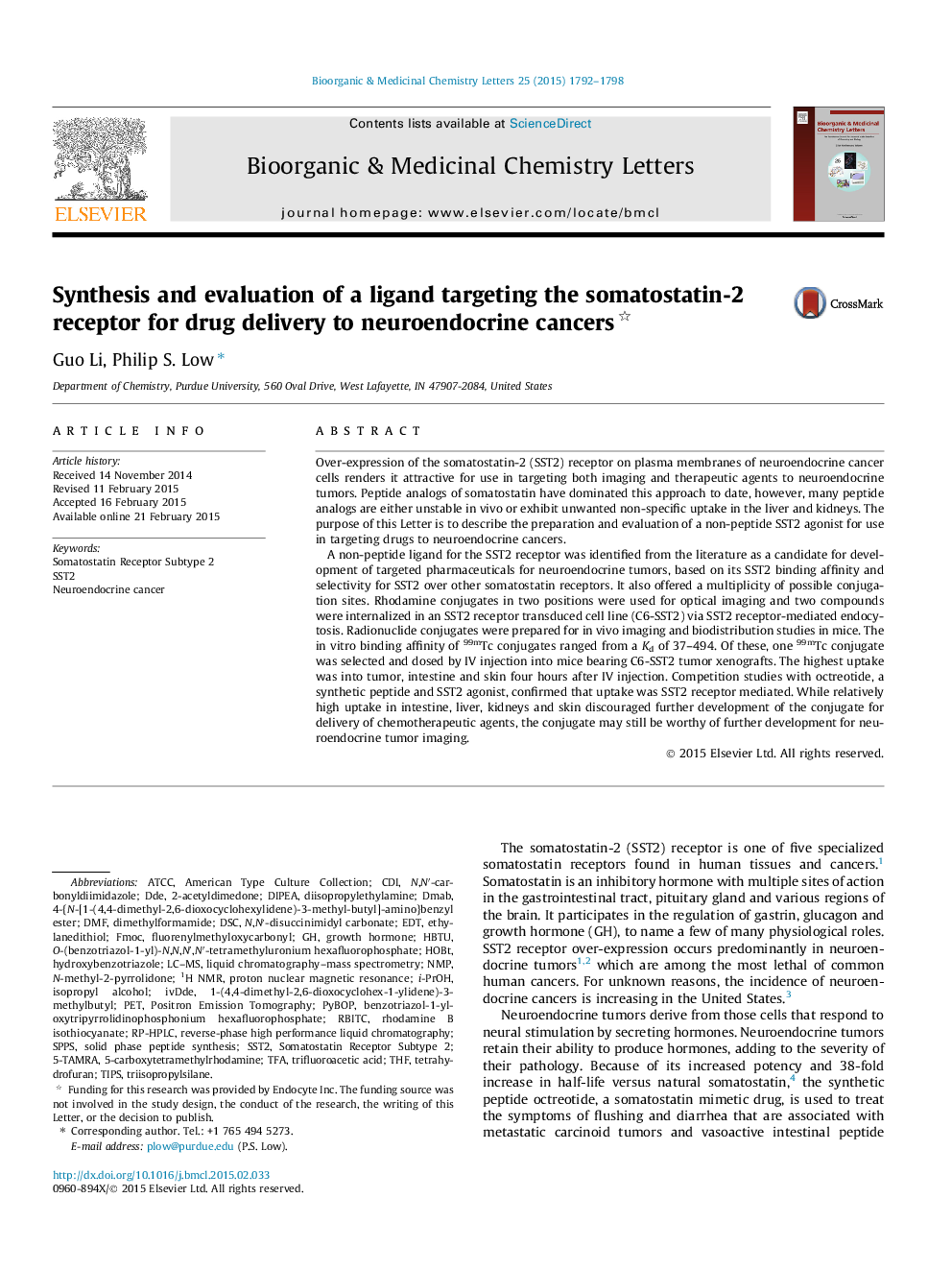| کد مقاله | کد نشریه | سال انتشار | مقاله انگلیسی | نسخه تمام متن |
|---|---|---|---|---|
| 1371043 | 981837 | 2015 | 7 صفحه PDF | دانلود رایگان |

Over-expression of the somatostatin-2 (SST2) receptor on plasma membranes of neuroendocrine cancer cells renders it attractive for use in targeting both imaging and therapeutic agents to neuroendocrine tumors. Peptide analogs of somatostatin have dominated this approach to date, however, many peptide analogs are either unstable in vivo or exhibit unwanted non-specific uptake in the liver and kidneys. The purpose of this Letter is to describe the preparation and evaluation of a non-peptide SST2 agonist for use in targeting drugs to neuroendocrine cancers.A non-peptide ligand for the SST2 receptor was identified from the literature as a candidate for development of targeted pharmaceuticals for neuroendocrine tumors, based on its SST2 binding affinity and selectivity for SST2 over other somatostatin receptors. It also offered a multiplicity of possible conjugation sites. Rhodamine conjugates in two positions were used for optical imaging and two compounds were internalized in an SST2 receptor transduced cell line (C6-SST2) via SST2 receptor-mediated endocytosis. Radionuclide conjugates were prepared for in vivo imaging and biodistribution studies in mice. The in vitro binding affinity of 99mTc conjugates ranged from a Kd of 37–494. Of these, one 99mTc conjugate was selected and dosed by IV injection into mice bearing C6-SST2 tumor xenografts. The highest uptake was into tumor, intestine and skin four hours after IV injection. Competition studies with octreotide, a synthetic peptide and SST2 agonist, confirmed that uptake was SST2 receptor mediated. While relatively high uptake in intestine, liver, kidneys and skin discouraged further development of the conjugate for delivery of chemotherapeutic agents, the conjugate may still be worthy of further development for neuroendocrine tumor imaging.
Figure optionsDownload as PowerPoint slide
Journal: Bioorganic & Medicinal Chemistry Letters - Volume 25, Issue 8, 15 April 2015, Pages 1792–1798